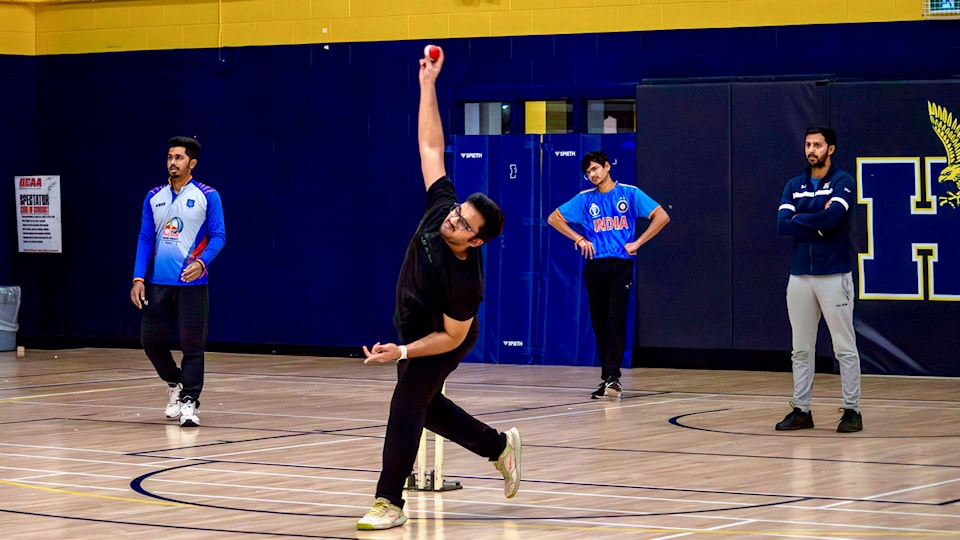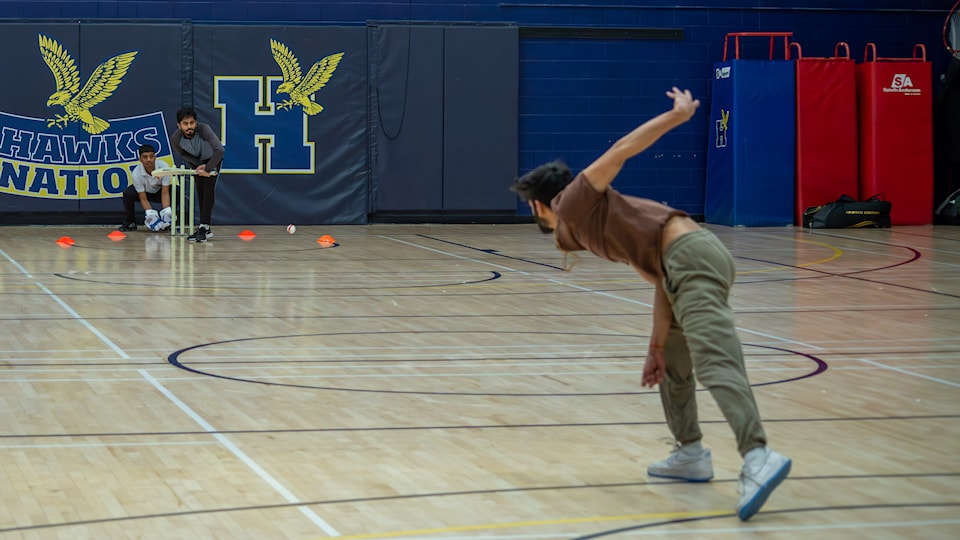Humber North’s extramural men’s indoor cricket team concluded its second and final tryout for the winter semester in preparation for a tournament later this month.
Practice runs Monday evenings from 8 p.m. to 10:30 p.m. with bowlers and batters flooding the court after-hours.
The men’s cricket team is holding onto a strong winning record.
In the 2024 season, the men’s indoor team made a heroic effort to win six of the seven indoor tournaments.
The outdoor roster took five for five in the summer.
Taqi Baig, head coach of 13 years, is feeling confident in his team to keep the streak going.
“Luckily this is the best team in 13 years,” Baig said. “We are defending champions at U of T for the last three tournaments back-to-back.”
The team will head to U of T Mississauga on Jan. 31 to make their presence known on the court in the first tournament of the winter semester.
Divya Mehta, one of the newest members of the lineup, is itching to get into his first season representing Humber Hawks.
“For three years I stopped playing cricket, but last year I started playing again and I also got selected for the Humber indoor cricket team,” Mehta said.
“I am feeling really good, you know? I am back in my form and everything,” he said. “I am the most excited guy on this team because I represent Humber and that is a proud feeling for me.”
For Mehta, a civil engineering student, cricket is a major passion in life.
“Last Thursday there was a tryout here and I got selected I went out and called my father and he was literally so happy, I can’t express it,” he said. “It is the only sport that I’ve been playing since my childhood and I will not touch any other sport than cricket, to be honest.”
“If I am tired, I play cricket. If I am happy, I play cricket. I am sad, I play cricket,” he said. “This game is everything to me.”
Indoor cricket has a different rule set than outdoor cricket, something team captain and ex-professional cricket player Shresth Nirmohi wasn’t always used to.
“I always played outdoor cricket so when I moved here to Canada I got introduced to this format of cricket,” Nirmohi said.
“As a player, I can learn so many new things in here, we have a confined space here so we have to take runs and still not get runouts,”
In a cricket match, a run is a unit of score and a runout is when a player gets dismissed from play.
Although confident in their team’s performance, Baig and Nirmohi are still thinking about how the team can improve.
“We had a good streak of games and tournaments this past year, but I think when we start fresh from the summer I’m not really sure we may get good talent or we might not,” team captain Nirmohi said.
“For batting, we are looking into players who can hit the sides,” head coach Baig said.
“Usually new players try and hit fours and sixes, indoor is all about hitting the sides taking one run,” he said. “If it hits the wall you get another run, so (for) each ball you get two runs.”
A "four" in cricket is when the ball hits or rolls over the boundary of play and a "six" is when the ball flies over the boundary without hitting the ground.
Each play scores as many runs as their respective name. For example, a "four" is worth four runs.
Indoor cricket also requires more precision from the players, as spatial limitations are added to play.
“Indoor we basically have a limitation, if you hit that it’s called out,” Baig said. “Usually it’s 12 or 15 feet (high) and then it’s out. You have to be accurate or you are out. You have to be vigilant.”







